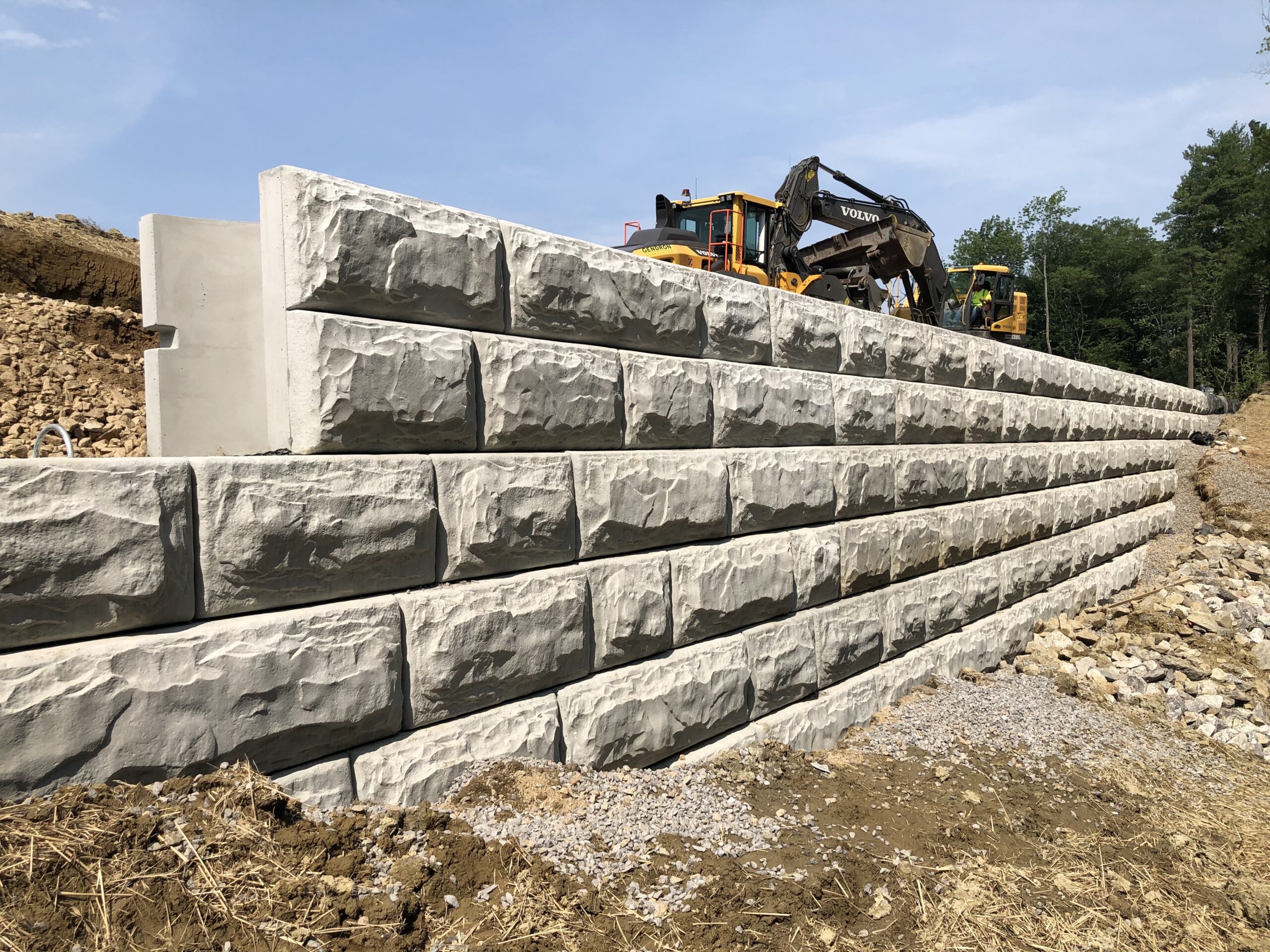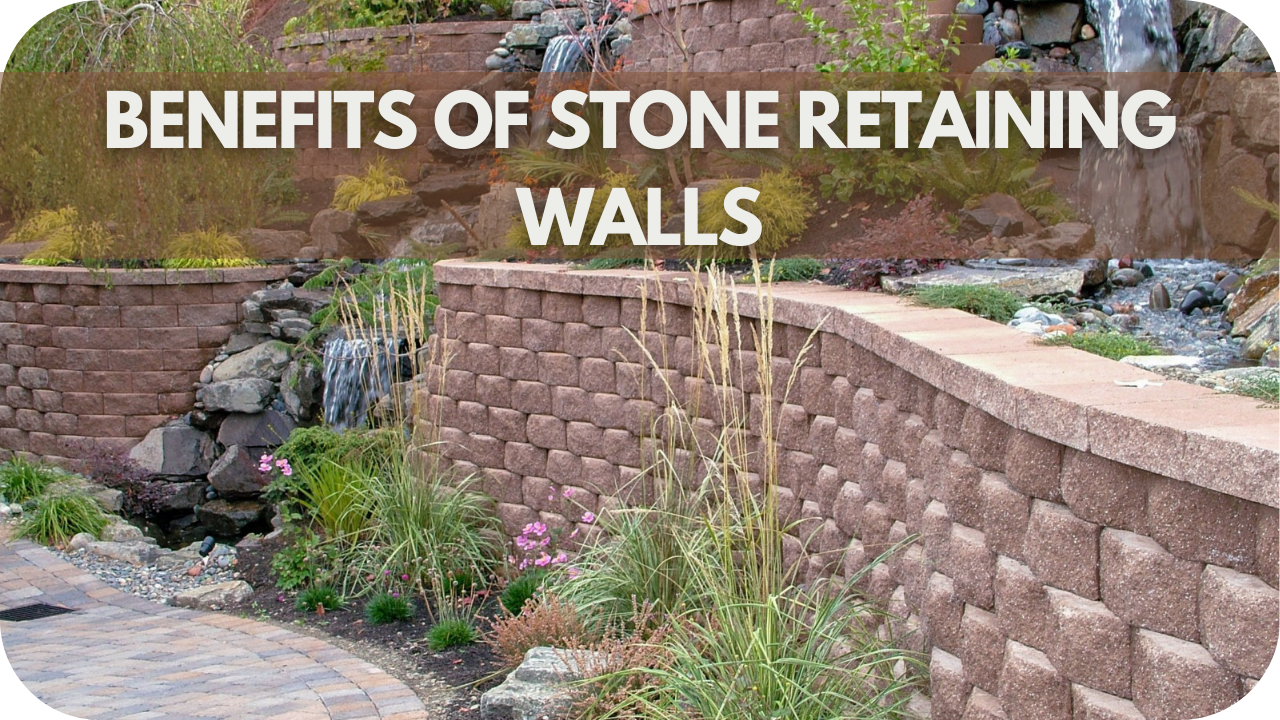Expert tips for maintaining OKC Precision Retaining Walls year-round
Secret Factors To Consider for Structure Reliable Retaining Walls in Your Yard
When you're considering building a preserving wall in your lawn, it's vital to believe about numerous crucial aspects. The wall's function, the materials you'll make use of, and the certain soil conditions can all impact its efficiency and long life. You'll additionally need to browse local building ordinance and plan for correct water drainage. Exactly how do you assure your layout not just fulfills these requirements yet additionally enhances your landscape? Allow's discover the essential actions together.
Recognizing the Function of Your Retaining Wall
When you consider developing a retaining wall, consider its major objective: stabilizing soil and avoiding disintegration. Retaining walls give vital support for sloped landscapes, aiding to preserve dirt integrity. You'll discover they're important in areas where water runoff could or else get rid of soil, leading to expensive repairs and landscape damage.
By holding back earth, these walls produce degree surfaces for gardens, patio areas, or paths. This not just enhances your lawn's appearances yet likewise promotes better drainage, lowering water pooling in undesirable locations. If you're taking care of steep inclines, a well-constructed retaining wall can stop landslides, guaranteeing safety and security for you and your residential or commercial property.
Eventually, recognizing the function of your retaining wall surface will certainly direct your style decisions and aid you produce a useful, resilient structure that satisfies your requirements. Take a moment to assess your landscape; it'll pay off in the long run.
Selecting the Right Products
When selecting products for your retaining wall, you'll wish to take into account sturdiness, appearances, and expense. Each variable plays a necessary function in guaranteeing your wall stands the test of time while looking great and suitable your spending plan. Let's discover exactly how to make the very best choices for your job.
Product Durability Aspects
Choosing the best products is vital for the longevity and efficiency of your retaining wall surface, since their sturdiness straight affects the wall surface's capacity to stand up to environmental stress and anxieties. Begin by considering your local climate; materials like concrete and stone withstand wetness and temperature level fluctuations well. If you live in an area vulnerable to heavy rainfalls, decide for products with great drain buildings, like gravel or porous blocks, to protect against water build-up.
In addition, consider the dirt conditions on your residential or commercial property. Some products execute much better in specific dirt types, so it is necessary to match them appropriately. Be conscious of potential wear from insects or disintegration. Choosing resilient materials guarantees your retaining wall stands solid, safeguarding your yard for several years to come.
Visual Layout Choices
Long lasting materials not only assure your retaining wall's architectural integrity yet likewise play a vital function in its aesthetic allure. Do not neglect about the wall surface's shape-- rounded walls can develop a softer appearance, while straight lines can feel more structured. By thoroughly choosing products that align with your aesthetic vision, you'll enhance your exterior area while guaranteeing your wall surface stands strong against the aspects.
Cost-Effectiveness Analysis
Picking the right products for your retaining wall isn't simply regarding looks; it's also essential for your spending plan. When selecting materials, think about both upfront expenses and long-term durability. For example, concrete blocks may be costlier initially, yet their longevity can save you cash on repairs. On the various other hand, lumber can be more affordable but may call for substitute sooner.
Do not neglect to variable in maintenance expenses. Some materials, like all-natural stone, can include appeal and call for much less maintenance, while others could require normal therapies
Inevitably, weigh the benefits and drawbacks of each option against your budget and the wall's intended purpose. Investing wisely in materials currently can prevent costly issues later on. Choose materials that stabilize price and efficiency properly.
Analyzing Dirt Problems and Drain
As you begin your project, reviewing soil conditions and water drainage is necessary for the success of your retaining wall. Sandy dirt drains well but does not have stability, while clay dirt can keep moisture, leading to pressure on your wall surface.
Next, analyze the slope of your backyard. If water normally flows towards your wall, you'll require to carry out a drain remedy to avoid erosion and stress buildup. Take into consideration setting up perforated pipelines or gravel backfill behind the wall surface to help with water drainage.
Finally, observe any close-by trees or plant life; their origins can influence soil security. By recognizing your dirt problems and applying correct water drainage, you'll develop a solid foundation for your retaining wall surface that stands the examination of time.
Following Local Structure Codes
Before you start constructing your retaining wall, you need to research study local regulations see this to ensure conformity. It's vital to recognize what allows you should acquire, as this can conserve you from costly fines or needing linked here to redo your work. Taking these steps seriously will assist you construct a safe and efficient framework.
Study Local Regulations
Understanding neighborhood policies is important when intending your retaining wall project, particularly since building codes can differ considerably by location. Look for standards on wall surface height, products, drain systems, and structural honesty. By doing your research study upfront, you can guarantee your retaining wall surface fulfills all essential codes and blends seamlessly into your backyard.
Get Needed Authorizations
Once you've looked into local laws, the following step is to get the necessary licenses for your retaining wall surface project. This procedure warranties your wall abides with building ordinance and safety and security standards. Connect to your neighborhood structure authority to discover what permits you require. They may need particular plans or engineering analyses, especially for larger walls. Be prepared to submit thorough drawings, consisting of dimensions and materials. Don't neglect to inspect if your task affects drain or surrounding properties, as these elements may need added authorizations. Protecting the ideal authorizations can conserve you from pricey penalties or needing to dismantle your wall surface later. Remember, complying with the policies currently will certainly cause a smoother building and construction experience.

Planning the Layout and Aesthetic Appeal
As you begin planning the design and aesthetics of your retaining wall surface, think about how it will certainly balance with the bordering landscape. Believe about the products you'll utilize-- stone, block, or concrete-- and how they'll enhance your home's design and the natural environments in your lawn. Pick colors and textures that blend effortlessly with existing features like patio areas, paths, or gardens.
Following, envision the wall surface's shape and height. Curved walls can soften an inflexible landscape, while straight top article lines may communicate an extra modern look. Don't fail to remember to include plants and plant around the wall for an all-natural touch; this can enhance its charm and integrate it right into the setting.
Lastly, remember capability. Your layout should not just be visually pleasing however additionally serve its objective successfully. By thoughtfully preparing these components, you'll create a preserving wall that boosts your yard's elegance while satisfying its structural role.
Calculating Height and Thickness Needs
To build a sturdy retaining wall surface, you need to precisely compute its elevation and density requirements based on the dirt conditions and the height of the slope it will certainly sustain. Beginning by reviewing the slope's angle and the kind of dirt, as various dirts exert varying quantities of stress.
For walls over 4 feet high, consider a thickness of at the very least 12 inches. If the wall is taller, enhance the thickness proportionally to preserve stability.
Next, calculate the height of the wall by determining the vertical distance it needs to keep. For each foot of height, you ought to commonly intend for a thickness of one-third of the wall surface's elevation.
Constantly bear in mind to represent additional factors like drainage and backfill, which can affect your wall's design. Proper calculations currently guarantee your retaining wall stands strong and lasts for years to find.
Maintenance and Longevity Considerations
While maintaining your retaining wall could feel like a low priority, ignoring it can cause considerable problems gradually. Normal inspections are important; check for fractures, protrudes, or any kind of indications of water damage. Addressing these problems early can save you from pricey repair work in the future.
Maintain an eye on drain systems, too. Blocked drains pipes can create water to develop, exerting pressure on your wall and compromising its security. Clear debris and assurance correct flow to maintain long life.
You might also intend to assess securing your wall surface to safeguard it from dampness and weathering. Relying on the material, this might need reapplication every couple of years.
Finally, landscaping around your wall can sustain its integrity. Stay clear of planting huge trees close by, as their origins can weaken the structure. With positive maintenance, your retaining wall can offer you well for several years to find.

Often Asked Inquiries
Can I Build a Retaining Wall by Myself, or Should I Employ an Expert?
You can certainly develop a keeping wall on your own if you have the right tools and understanding. Nonetheless, working with a specialist guarantees it's done properly, specifically for larger or more complicated frameworks. Consider your skill degree prior to making a decision.
What Are one of the most Typical Blunders Made When Building Retaining Walls?
When constructing retaining walls, you may forget proper drain, miss making use of the ideal products, or forget support. These common errors can bring about structural failing, so take your time and strategy meticulously to stay clear of issues.
How Do I Know if My Retaining Wall Demands Reinforcement?
You'll recognize your retaining wall surface requires reinforcement if you notice splits, leaning, or protruding. Look for water merging behind it or dirt erosion near the base. Address these indicators quickly to avoid additional damage.
What Plants Are Appropriate for Landscaping Around a Retaining Wall?
When landscaping around a retaining wall, take into consideration using low-maintenance plants like succulents, decorative turfs, or slipping ground covers - OKC Precision Retaining Walls. They'll grow in those problems and add charm while avoiding dirt erosion around your wall surface
Just How Can I Prevent Disintegration Around My Retaining Wall?
To avoid erosion around your retaining wall surface, you can grow ground cover, usage compost, and mount water drainage systems. Routinely look for water buildup and change landscaping to redirect runoff far from the wall.